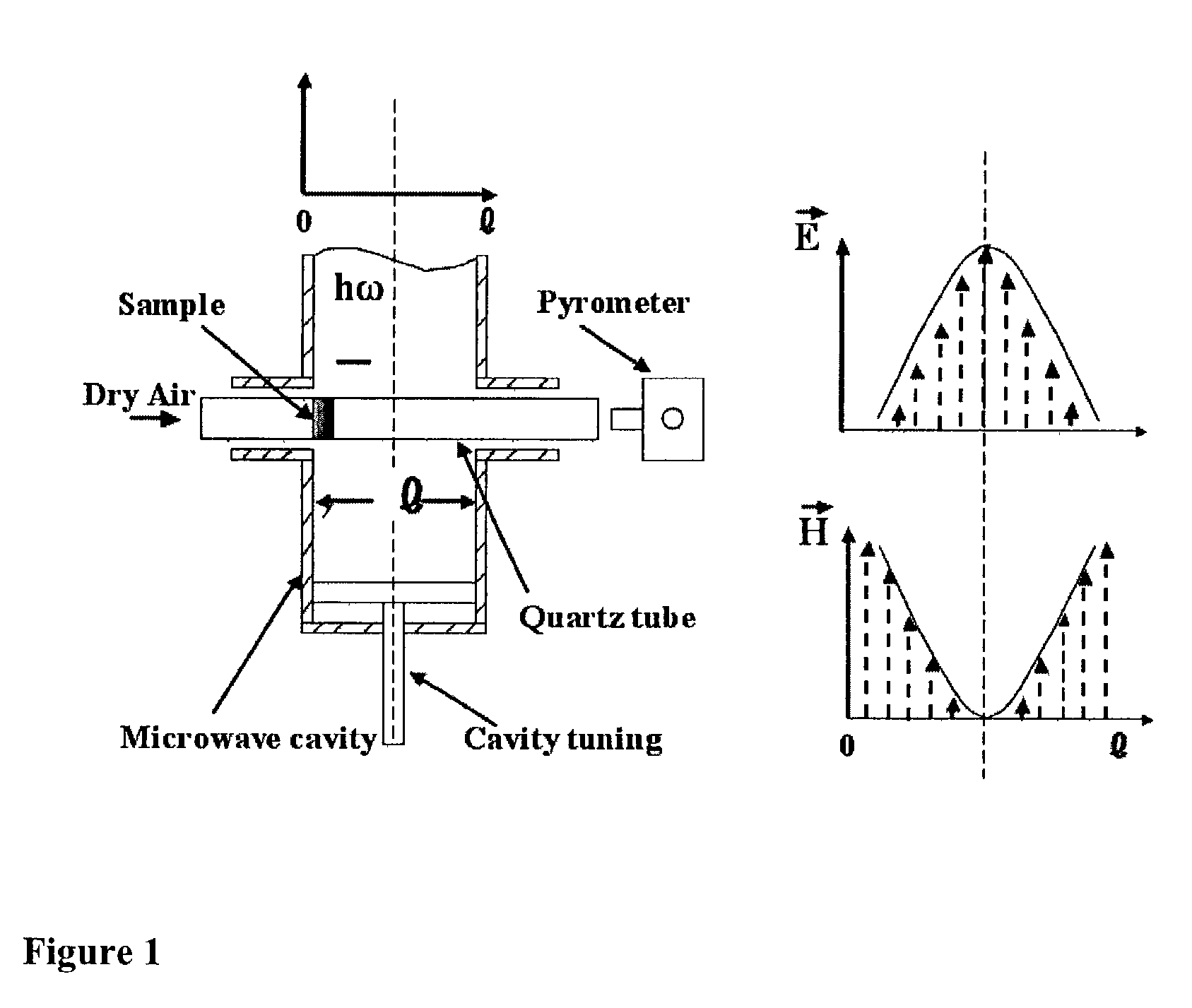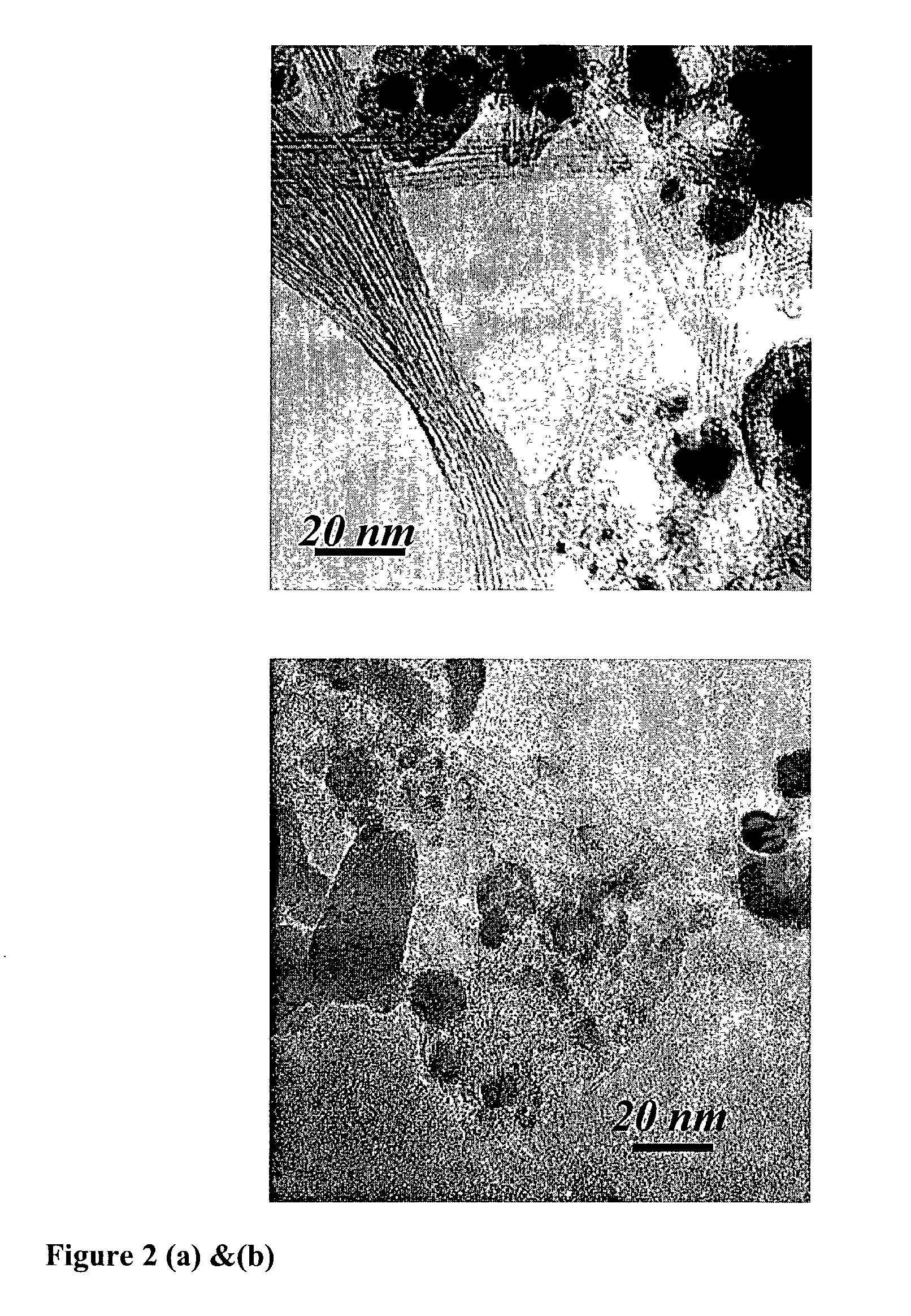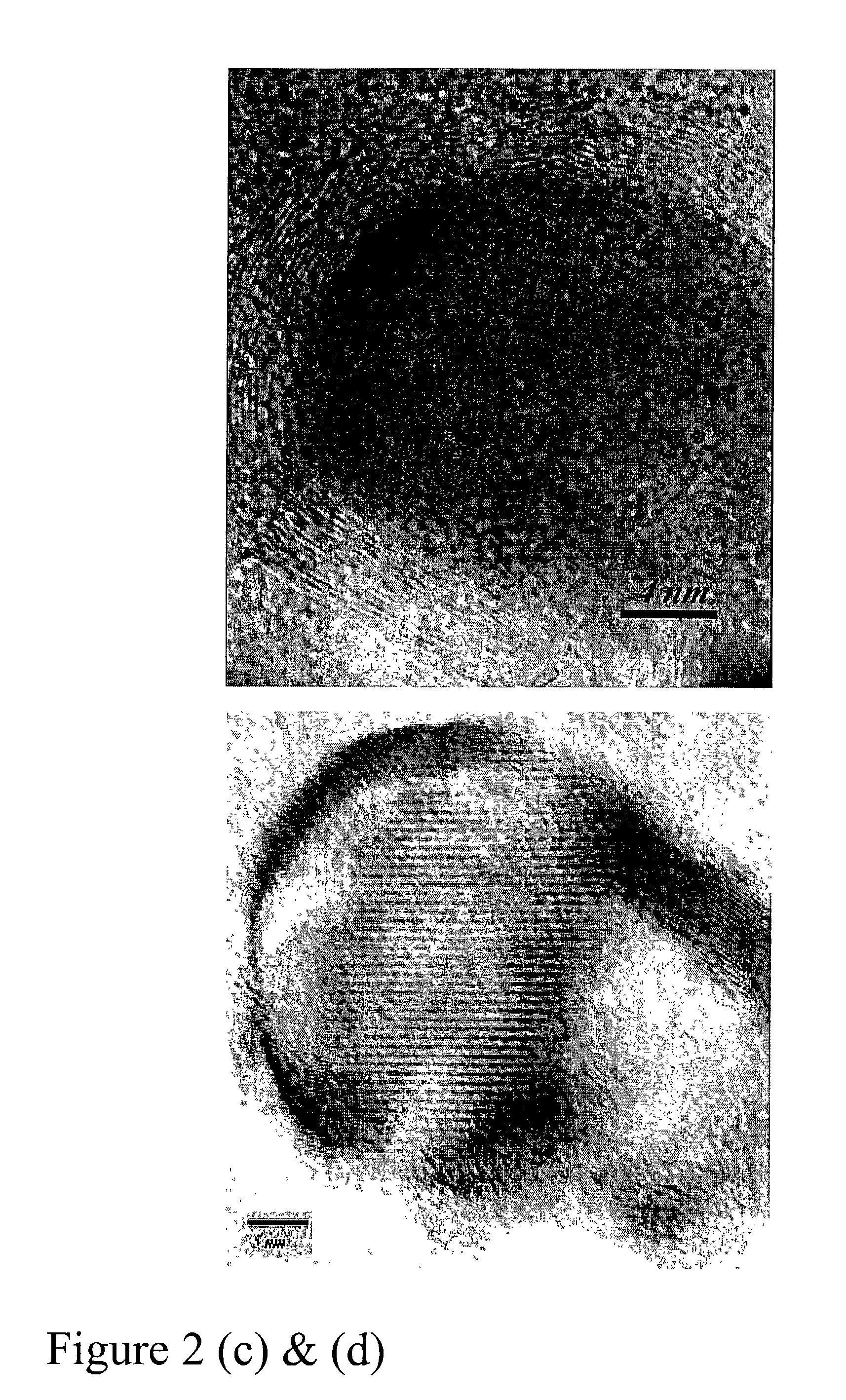Method of purifying nanotubes and nanofibers using electromagnetic radiation
a technology of electromagnetic radiation and nanotubes, applied in the field of synthesis and purification of nanotubes and nanofibers, can solve the problems of attenuation or loss of favorable physical properties that are predicted by theory, and the effect of reducing the effect of swnt on the reaction product, and reducing the effect of swn
- Summary
- Abstract
- Description
- Claims
- Application Information
AI Technical Summary
Problems solved by technology
Method used
Image
Examples
example 1
A. General Procedures
[0080]Single walled carbon nanotubes (SWNTs) were obtained from Carbolex, Inc. (Lexington, Ky.). The SWNTs were supplied as the crude reaction product of an arc-discharge process in which an Ni—Y catalyst had been added to the electrodes. The crude reaction product of an arc-discharge process, also known as soot and which included SWNTs and impurities such as residual catalyst, is considered by those of skill in the art to be the least tractable product from which to remove catalyst residue. The successful removal of catalyst residue and undesired carbon phases from soot thus constitutes an especially rigorous demonstration of the present methodology.
[0081]The level of residual catalyst in the Carbolex SWNT reaction product material is 4–6 atom % (20–40 wt %) as determined by temperature-programmed oxidation (TPO) using an IGA-3 thermogravimetric analyzer (TGA) (Hiden Analytical Ltd., Warrington, UK). In the TPO analysis, metal to carbon ratios are calculated fr...
example 2
Purification of Silicon Nanofibers
[0103]Silicon nanofibers are synthesized by laser ablation of a target containing silicon and gold. The crude product,including silicon nanofibers and silicon-covered, gold-containing particles, is exposed to microwave radiation. The outer layers of silicon on the silicon-gold alloy particles are removed or partially removed by gasification to silane. This is accomplished by conducting the localized heating in a reducing atmosphere, e.g., by flowing a mixture of 10% hydrogen in argon over the crude product during the exposure to microwave radiation. The resulting mixture is heated at reflux in relatively dilute aqua regia to remove the residual particles comprising gold from the silicon nanofibers.
[0104]Alternatively, the outer layer of silicon on the silicon-gold alloy particles is breached during the localized heating step due to the mismatch of the thermal expansion coefficients of the silicon and the silicon-gold alloy. The gold is dissolved in ...
PUM
| Property | Measurement | Unit |
|---|---|---|
| Temperature | aaaaa | aaaaa |
| Time | aaaaa | aaaaa |
| Power | aaaaa | aaaaa |
Abstract
Description
Claims
Application Information
 Login to View More
Login to View More - R&D
- Intellectual Property
- Life Sciences
- Materials
- Tech Scout
- Unparalleled Data Quality
- Higher Quality Content
- 60% Fewer Hallucinations
Browse by: Latest US Patents, China's latest patents, Technical Efficacy Thesaurus, Application Domain, Technology Topic, Popular Technical Reports.
© 2025 PatSnap. All rights reserved.Legal|Privacy policy|Modern Slavery Act Transparency Statement|Sitemap|About US| Contact US: help@patsnap.com



